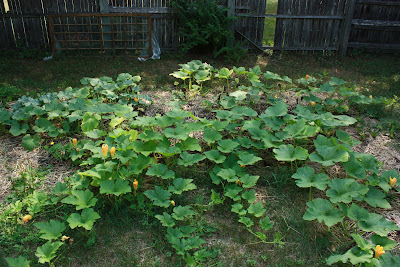Fusilli with Creamy Zucchini and Basil Sauce
* 1 pound zucchini (with blossoms, if possible)
* vegetable oil to come ½ inch up the side of a skillet
* 1 pound fusilli (or any short, stubby pasta)
* 3 Tbsp butter
* 3 Tbsp olive oil
* 1 tsp flour, dissolved in 1/3 cup milk
* salt
* 2/3 cup roughly chopped basil
* 1 egg yolk, beaten lightly with a fork
* ½ cup grated Parmesan cheese
* ¼ cup freshly grated Romano cheese
First, put a large pot of water up to boil. Slice zucchini and blossoms into pieces 3 inches long and 1/8 inch thick. Heat the oil and fry the zucchini sticks in batches, without crowding the pan, until they are light brown, turning occasionally. As each batch is done, transfer to paper towels to drain. When the pasta water comes to a boil, add 2 Tbsp salt and stir in the pasta and allow to cook while you prepare the sauce. Melt half the butter and all the oil in a skillet. When the butter foams, turn the heat down and stir in the flour-and-milk mixture, a little at a time, stirring constantly for 30 seconds. Add the fried zucchini sticks, ¼ tsp salt and the basil and stir gently. Off the heat, swirl in the remaining butter, egg yolk and grated cheese. Strain the pasta when it is al dente and toss it with the sauce in a large serving bowl and serve immediately.
thanks to the Kitchen Garden Farm













